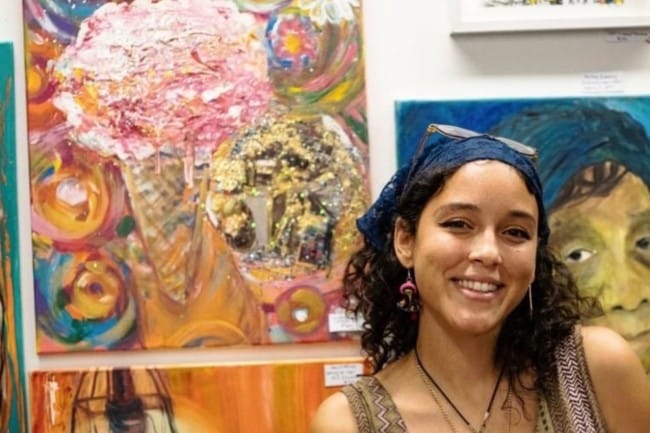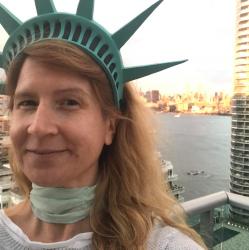In recent years, creative arts therapies have gained global support as an effective tool to improve mental, emotional, and physical wellbeing. One Jersey City woman + art therapist, Athena Toledo, is part of a growing movement to increase the reach of art therapy — believing it to be a powerful tool for mental wellness. Read on to learn all about Athenta Toledo and the power of art therapy.
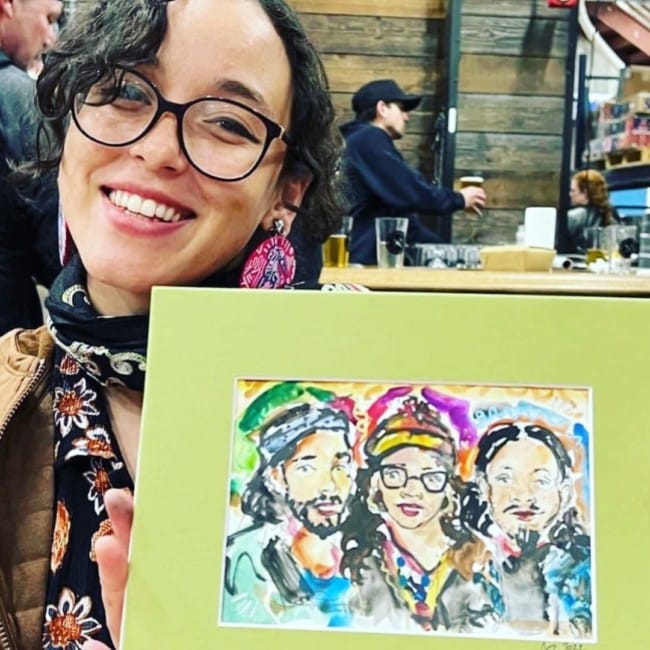
The Case for Art Therapy
Art therapists use creative media — think clay, paint, paper-making, paper-cutting, line drawing, sand sculpture, collage — to help with anything from the treatment of serious mental illness to everyday stress. The medium may be somewhat prescriptive, but no art form is necessarily better than another as an aide in thinking and talking through difficult memories and emotions.
Athena Toledo describes the media she uses in therapy sessions as differently suited for different tasks. Working clay, she explains, can offer relief. Paint colors, she finds, evoke emotional responses, though often the interpretations of which emotions connect to what colors differs from person to person. For those engaging in art therapy, just having an activity to engage their hands and a bit of mental distraction while talking out problems can help in making those problems seem more malleable and the feelings around them less intense. Parts of the mind activated by creative doing may spark new interpretations and understandings.
Read More: Acclimating to Routine After Vacation, from a Local Therapist
Athena is a 2020 New Jersey City University graduate, currently obtaining her Masters degree in art therapy from the School of Visual Arts New York City. Through this program, that she describes as heavily rooted in clinical psychology, Athena is building an art therapy practice that she sees need for just about everywhere. There is clear, usage-based evidence that art therapy can help all of us — children, adults, and the elderly — deal with, interpret, and work through traumatic experiences, acute and chronic illness, anxiety, dementia and so many other normal parts of our complex modern lives.
The things that bring us into therapy are often very serious and not a lot of fun to discuss. But having fun is one tool that art therapists can utilize while building trust and exploring feelings. The shared act of doing and making shapes a relationship between art therapist and artist-client that is, by its nature, productive. There is hope baked into the generative process of creative art making. Tears during difficult conversations come alongside an, “Oh, look what I made” sniffle and laugh. Side comments about glue and glitter can take the edge off. As she probes and listens, Athena helps those she works with to increase their own self-awareness while she models a healthy way to cope with life’s challenges.
Bringing Art Therapy into Schools
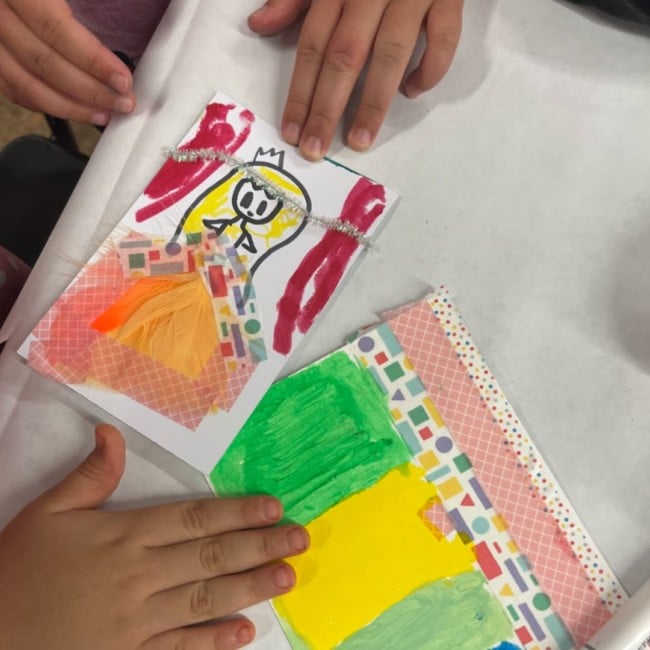
Athena’s experience working with high school students will not surprise anyone who has ever worked with teenagers, lived with teenagers, or been one. Those young people are dealing with a lot. They are stressed. Often, they are sad. It can all be very overwhelming. Athena has observed, firsthand, how needed dedicated art therapy programs and spaces are in schools. Whether the session is for small groups, individuals, standby therapy, or drop-in visits in an open studio setting, students seek out the help. It makes sense that these programs are starting to come into schools; creative therapies have been shown to improve concentration, lower anxiety, help children self-regulate, and possibly prevent suicide.
In case it’s starting to sound like it might be — art therapy is not the same as art class. Both are important parts of any academic program for different reasons. Artistic skills are worthwhile pursuits for any number of excellent reasons. But the art class a student may take in school is not therapy. What happens in an art therapy program is healthcare. Art therapists have an ethical and legal obligation to consider the privacy of their students. Art therapists are highly trained and hold certification specific to the mental healthcare work that they do.
Art Therapy for Seniors
Currently, Athena is engaged in art therapy work with seniors at Peace Care St. Ann’s in Jersey City’s Greenville community. Like with most things that Athena talks about, she beams when describing her sessions with seniors. No matter if their fine motor skills have been reduced to a fraction of what they once were, or how much struggle it is for these elders to remember things they would like to remember, art therapy has something to offer them. Storytelling is more natural when the hands are moving.
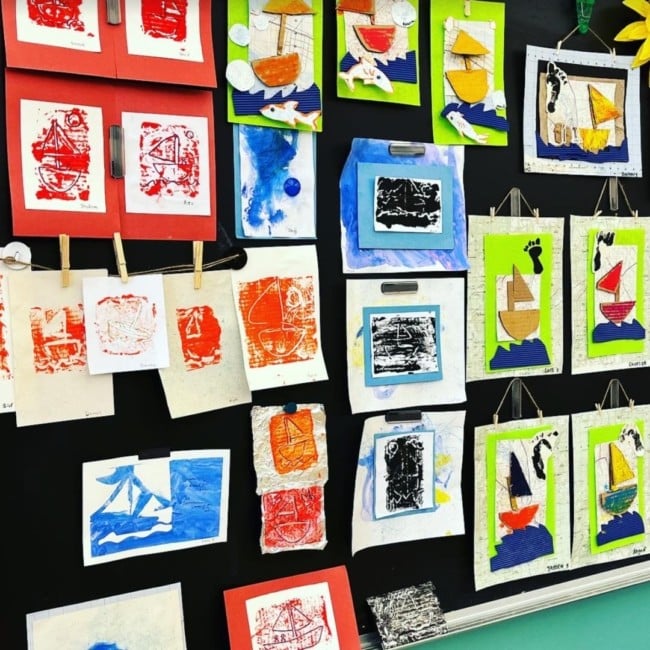
Joy, laughter, and tears are all easier to move through when there is a project on the table. Athena’s respect for the emotions that emerge as she works through an activity with her artist clients, and her authentically positive energy, allow her clients to rest assured that they are safe and secure while feeling, sharing, and working through the frustrations of aging and of loss that cannot be dispelled by a pill.
Art Therapy for Community Health
Towards the end of summer, Athena curated a group art exhibition in Journal Square. Pause Listen Love pulled 20+ artists’ artworks together under a broad theme of art as a form of self-care. It was up for public viewing at the PATH Commuter Gallery and included an open mic event as well as artist-talks and craft-based tutorials.
See More: North Jersey Meditation Classes for a Mindful Autumn
In one of her many efforts to bring her practice to the streets, Athena recently set up a little booth under a vendor friend’s tent at the Bergen Square Day Festival. She arranged cute colorful objects upon the table that she’d set up for the portrait paintings she offered to make for passersby. The cozy spot was welcoming even before Athena turned her bright attention toward her sitters.
Athena thinks that, now more than ever, we should turn to art as a medical prescription. Learning to use visual language to communicate fully is a worthwhile tool to have while venturing out into the world. Luckily, her understanding of the value of art and of art therapy seems to be gaining ground.

